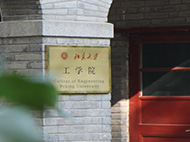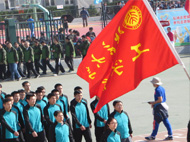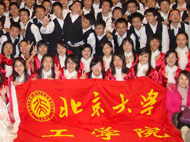主办:材料科学与工程系
报告人:Shi Xue Dou院士和Hua Kun Liu院士 Institute for Superconducting & Electronic Materials | Australian Institute for Innovative Materials, University of Wollongong, Australia
时间:9月23日(周一) 上午10:00-12:00
地点:澳门太阳娱乐网站官网210会议室
主持人:郭少军
报告摘要:
Significant advances in development of strategies and approaches on novel materials design and processing have been made. Here we particularly highlight the advantages of combination of multi-functionalities to achieve synergetic effect on materials performance. These include combination of carbon coating with band engineering for alteration of electronic properties; universal general approach for morphology control; combination of physical confinement with catalytic effect to control polysulphide loss in metal sulphur battery; multiple strain engineering for improvement of flux pinning in superconductor and reactive sites in catalysts; additive & subtractive engineering for controlled growth of nanomaterials with designed size, shape and composition; multiple dimension manipulation to achieve optimised electronic, ionic and optical properties; york-shell sphere/core-shell wire/tube/fabires/ribbons to control unwanted strain; hybridization at materials, structure & device level to achieve high reactivity in catalysts and storage materials. Among these the interface/surface science and engineering is the most critical element for materials design and processing at both fundamental and applied level. Most of our researches are limited within the block of research inputs to research outputs while there is a huge gap between research outputs and commercial benefits in our research which must be addressed. Scaling-up all the processes remains as a great challenge to facilitate research industry transformation processes from laboratory to real world application.
报告人简介:
Prof. Shi Xue Dou is a distinguished professor at University of Wollongong, the founding director of ISEM and UOW Ambassador for China. He received his PhD at Dalhousie University, Canada in 1984 and DSc at the University of New South Wales in 1998 and was elected as a Fellow of the Australian Academy of Technological Science and Engineering in 1994. He was awarded the Australian Government’s Centenary Medal in 2003 and Australian Order of Member in 2019 for his contribution to materials science and engineering, multiple Australian Professorial Fellowships from 1993 to 2011, the Vice-Chancellors Senior Excellence Award in 2008, Outstanding Partnership Award in 2012 and the Life Achievement Award from ASTS in 2018. He is named as a highly cited researcher in materials science by Thomson Reuters with citations of 41,000 and h-index of 93 (Scopus). His research focusses on energy and electronic materials. He has supervised and co-supervised 98 PhD students, more than 60 postdoctoral and visiting fellows. He is program leader for Auto CRC 2020 on electrification program and the on-going ARENA 2016-2020 on smart sodium storage system program.
Prof Hua Kun Liu is a distinguished professor and the founding program leader for energy materials at ISEM, the University of Wollongong. She was awarded the Australian Professorial Fellowships by Australian Research Council in 1994, 1999, 2003, and 2006. She was elected as a Fellow of the Australian Academy of Technological Science and Engineering in 2013 and was awarded the Doctor of Science by the University of Wollongong in 2017. She received the University of Wollongong Vice-Chancellor’s Award for Excellent Senior Researcher in 2013 and the Woman of Impact in 2016. She was a chief investigator for the Centre of Excellence for Electromaterials from 2003-2013, for the Automotive CRC-2020 program and the ongoing ARENA-funded Smart Sodium Storage Solution Project. Prof. Liu has established international reputation in energy storage materials research and concrete research network around the globe. She is named as a highly cited researcher in both chemistry and materials science by Thomoson Reuters with citations over 42,000 and h- index of 98 (Scopus).








